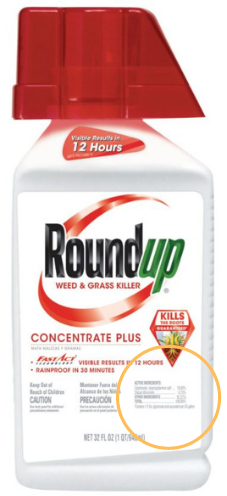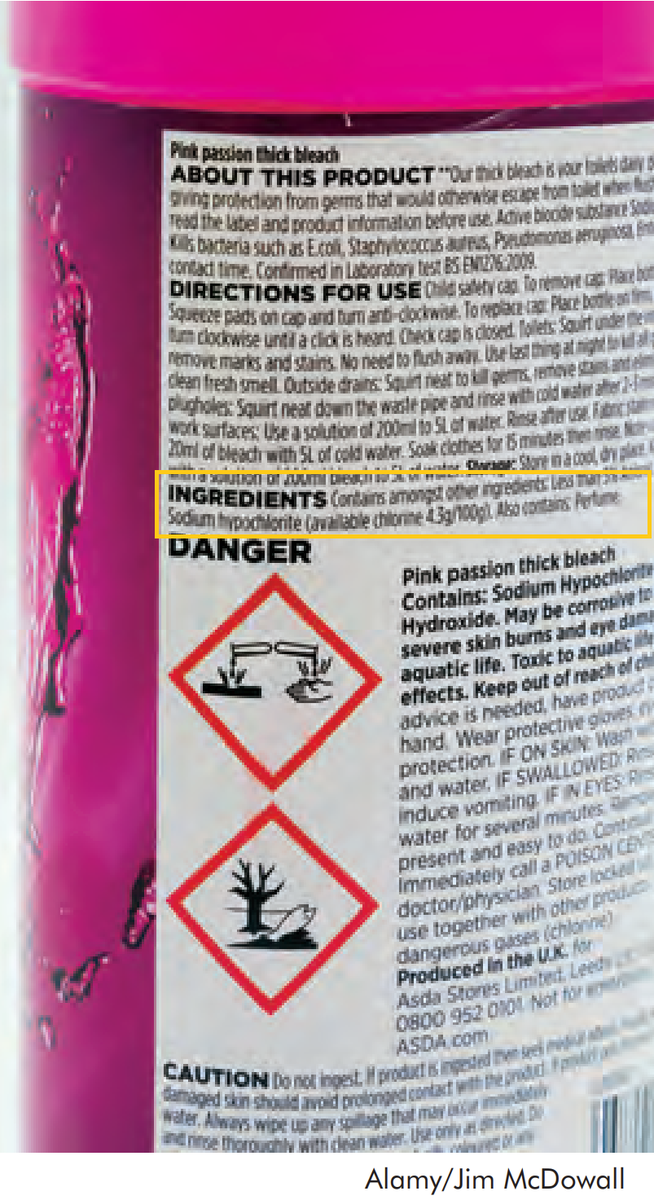Gateway on Pesticide Hazards and Safe Pest Management
How To Find Ingredients in Pesticide Products
Beyond Pesticides offers resources below to evaluate the health and ecological effects of specific chemical exposure from ACTIVE INGREDIENTS in pesticide products, as well as regulatory information and supporting scientific documents. Because various pesticide products can contain more than one active ingredient, it is important to READ the LABEL to determine chemical components.
With 192 different active ingredients and counting, it is essential to establish the connection between the use of these chemicals and their respective hazards.
View the step-by-step guide on how to search for the active ingredient(s) in pesticide products below:
- Go to U.S. EPA's Pesticide Product and Label System and enter the product name. The generic product name may vary.
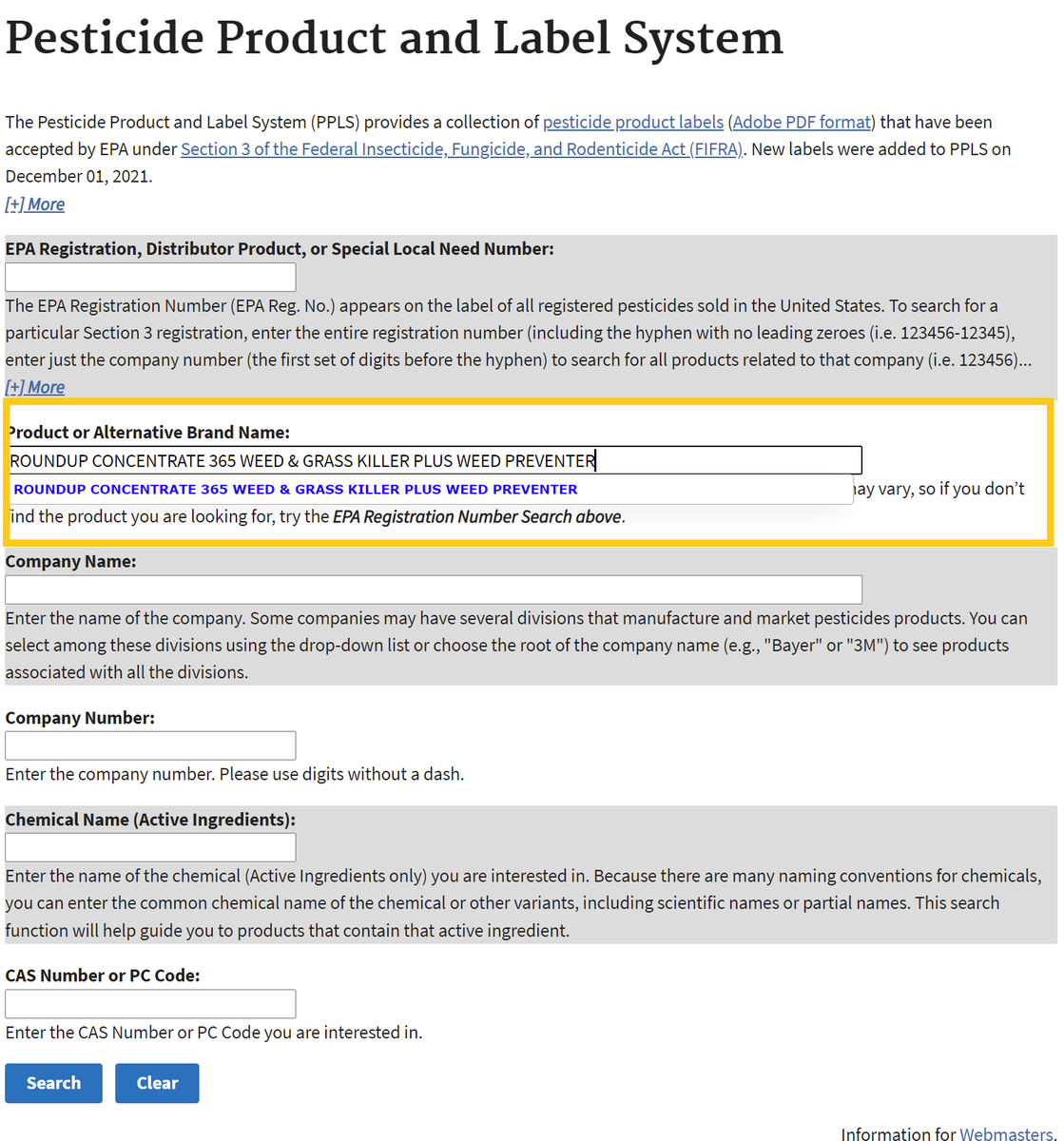
- After searching, click on the chemical ingredients tab or the link for the most recent label to find Active Ingredients.
Chemical List Label List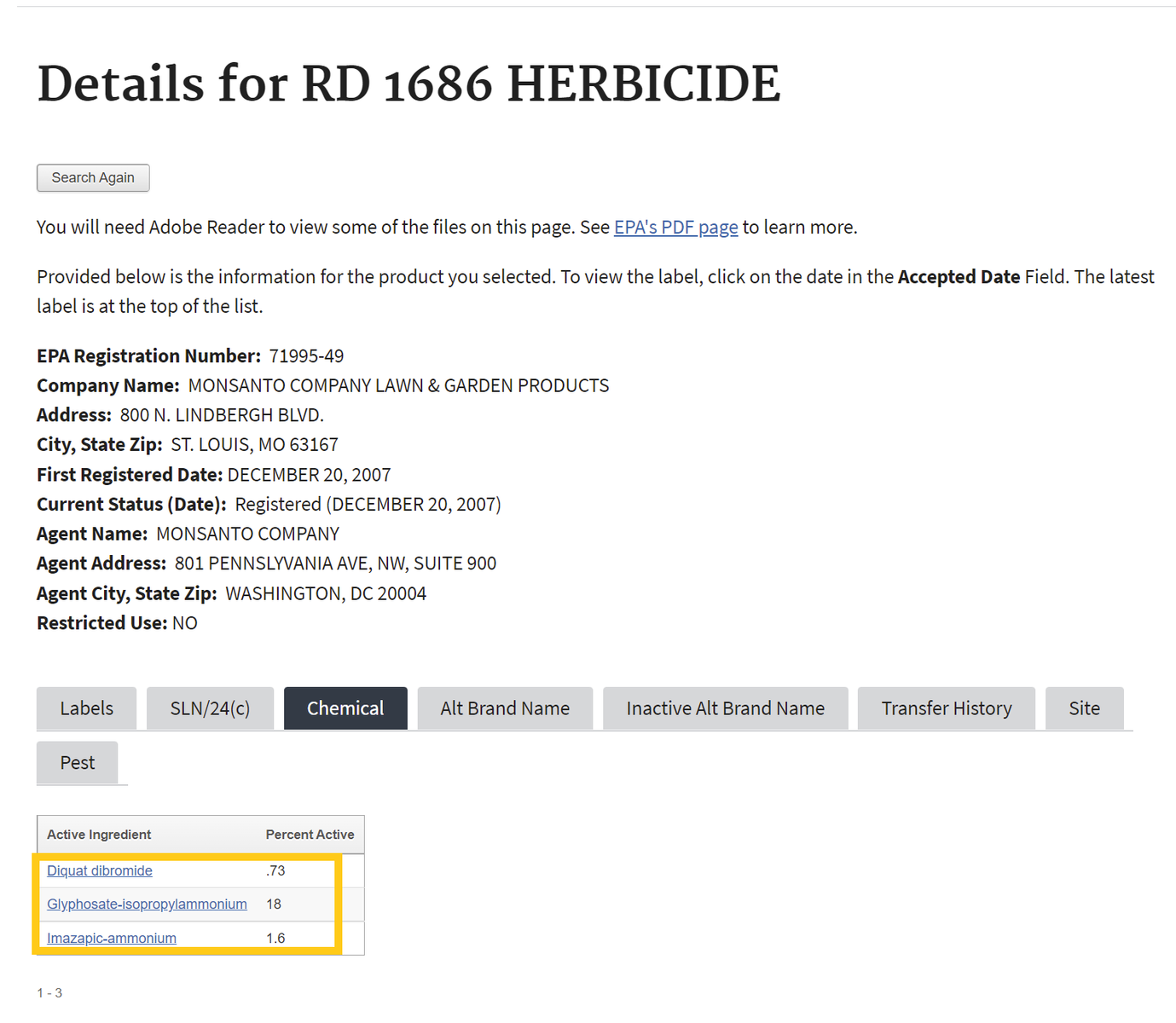
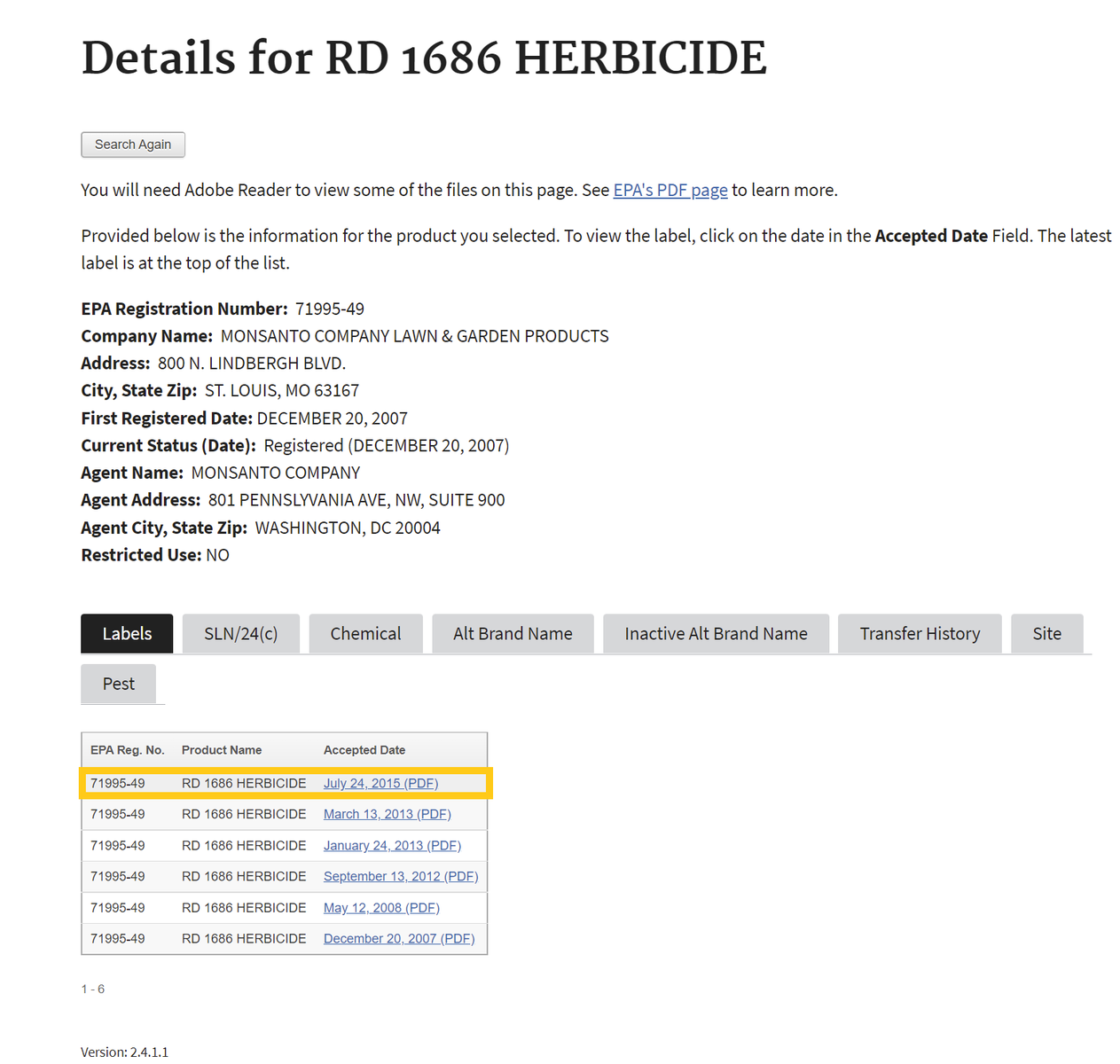
If one selects the chemical ingredients tab, skip to Step 4 . If not, proceed to step number 3 - To find the active ingredient(s) on the label, search for the page in the document containing the date of registration. Usually, the active ingredients section occurs within the first few pages of the label document.
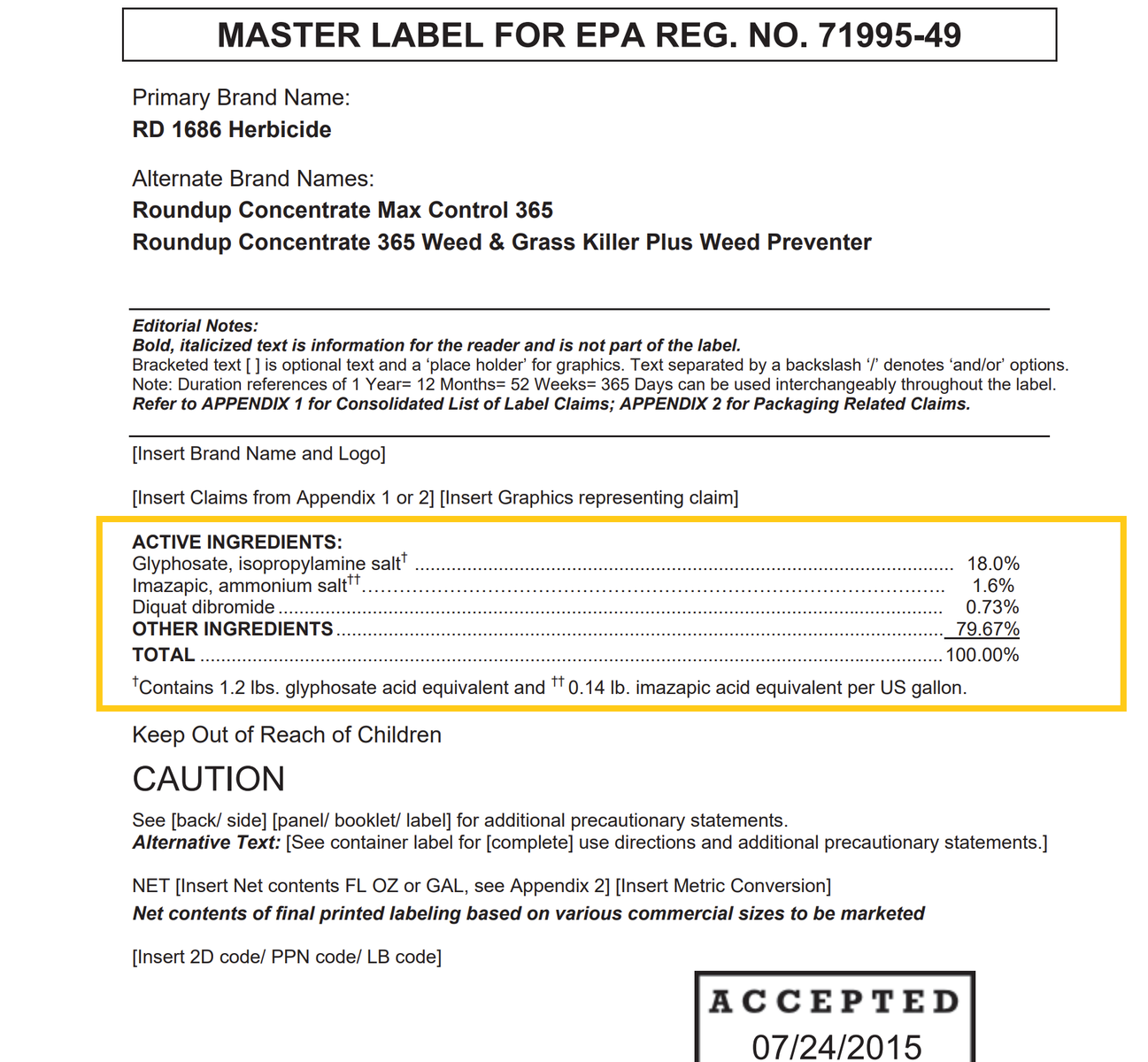
- Return to the Beyond Pesticides Gateway and search for the active ingredient name in the yellow box to the right or from the list below.
Linuron
General Information
- Product Names:
- Chemical Class: Substituted urea herbicide
- Uses: Restricted Use Pesticide used to control germinating and newly emerging grasses and broad-leafed weeds on agricultural crops, ornamental bulbs and poplar trees.
- Alternatives: Organic agriculture
- Beyond Pesticides rating: Toxic
Health and Environmental Effects
- Cancer: Possible (8)
- Endocrine Disruption: Yes (30)
- Reproductive Effects: Yes (8)
- Neurotoxicity: Not documented
- Kidney/Liver Damage: Not documented
- Sensitizer/ Irritant: Not documented
- Birth/Developmental: Not documented
- Detected in Groundwater: Not documented
- Potential Leacher: Not documented
- Toxic to Birds: Not documented
- Toxic to Fish/Aquatic Organisms: Yes (8)
- Toxic to Bees: Not documented
Additional Information
- Regulatory Status:
- EPA Tolerance Reassessment Eligibility Decision (TRED) Signed (5/2002)
- EPA Reregistration Eligibility Decision (RED) (3/1995)
- Supporting information:
- Extoxnet Linuron Factsheet (Extension Toxicology Network)
- PAN Pesticide Database – Linuron (Pesticide Action Network)
- Studies:
- Environmental Control of Astrocyte Pathogenic Activities in CNS Inflammation. Wheeler, M.A., Jaronen, M., Covacu, R., Zandee, S.E., Scalisi, G., Rothhammer, V., Tjon, E.C., Chao, C.C., Kenison, J.E., Blain, M. and Rao, V.T., 2019. Cell, 176(3), pp.581-596.
- Exploring associations between residential exposure to pesticides and birth outcomes using the Dutch birth registry. Simões, M., Vermeulen, R., Portengen, L., Janssen, N. and Huss, A., 2023. Environment International, p.108085.
- Pesticides and prostate cancer incidence and mortality: An environment-wide association study. Soerensen, S. et al. (2024) Pesticides and prostate cancer incidence and mortality: An environment-wide association study, Cancer. Available at: https://acsjournals.onlinelibrary.wiley.com/doi/10.1002/cncr.35572.
- Immune response of Brazilian farmers exposed to multiple pesticides . Jacobsen-Pereira, C.H. et al. (2020) ‘Immune response of Brazilian farmers exposed to multiple pesticides’, Ecotoxicology and Environmental Safety, 202, p. 110912. doi:10.1016/j.ecoenv.2020.110912.
- Wastewater surveillance for assessing human exposure to pesticides: Investigating populations living near flower bulb fields. Bijlsma, L. et al. (2025) Wastewater surveillance for assessing human exposure to pesticides: Investigating populations living near flower bulb fields, Journal of Environmental Chemical Engineering. Available at: https://www.sciencedirect.com/science/article/pii/S2213343725017865.








.png)
